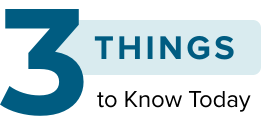

New NCCN Guidelines for Mammography: All Women Over 40
New evidence-based guidelines from the National Comprehensive Cancer Network (NCCN) call for annual mammograms for all women older than 40.
Straightforward guidelines: The guidelines state that women should undergo a risk assessment for breast cancer starting at age 25. For women with average risk, annual mammography screening should start at age 40.
Assessing risk: Doctors may recommend even earlier screenings for people with additional risk factors. Screening is also important for those who are pregnant or breastfeeding.
Variations: Different organizations recommend various screening guidelines. The US Preventive Services Task Force recommends screening before age 50, the American Cancer Society recommends screening for those aged 40–44 years, and the American College of Obstetricians and Gynecologists supports personal choice and shared decision-making after appropriate counseling, with mammography offered annually or biannually.
Simplified message: The NCCN aims to help sort out options in plain language and easy-to-follow guidelines.

Medscape Residents Salary and Debt Report 2022
Residents’ salaries remained nearly stagnant during the pandemic, with only a 3% annual growth between 2017 and 2020, according to a new Medscape report.
Dissatisfied: Just over 25% of residents feel they were fairly compensated, which is significantly less than in 2015, when 62% of residents felt they were fairly compensated.
More, please: More than half of residents feel they should make from 26% to 75% more. Thirty-six percent of residents feel they should make from 26% to 50% more, and 18% think they should make 51% to 75% more.
Large debt: Half of respondents owe more than $200,000 in medical school loans. Of those, 26% carry a debt of more than $300,000.

New Wearable 48-Hour Ultrasound Technology
To undergo an ultrasound may soon be as easy as putting on a bandage, thanks to new research from the Massachusetts Institute of Technology.
Extended monitoring: The bioadhesive ultrasound device can provide 48 hours’ worth of images of organs, muscles, and tissues.
At-home care: The research teams plan for the ultrasound sticker to eventually be used at home to provide care to anyone. They anticipate that it will be particularly valuable for pregnant people and athletes.
Many applications: The sensors are sensitive enough to monitor microdamage in biceps during and after a 1-hour weightlifting session. Other applications include blood pressuring monitoring, heart imaging, and possibly the monitoring of fetuses, although that was not tested in the study.
Next steps: The researchers hope to create a second-generation sticker that is wireless and can be connected to smartphones. They estimate that it will be another 2–5 years until the device will be approved by the US Food and Drug Administration for medical use in the US.
Kaitlin Edwards is a staff medical editor based in New York City. You can follow her on Twitter @kaitmedwards. For more news, follow Medscape on Facebook, Twitter, Instagram, and YouTube.
